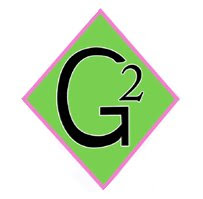TOP 10 CHEMICALS TO AVOID
By Cherie Corso
Spring is just around the corner, its now a great time to go through your lotions and potions and read the labels. But what does it mean? The following is a list of 10 toxic chemicals contained in many cosmetic ingredients that you should avoid from this day forward. As I always say we can do it all, but if you read the list and can eliminate one or two ingredients from your beauty routine you will be better off. Just take a look it cant hurt, will help you. Everything in moderation "one drop at a time we can help ourselves and the environment".
Urea
Examples: diazolindyl urea, imidazolindyl urea
Common preservatives that release formaldehyde, a known carcinogen, that is irritating to the mucous membranes and known to cause contact dermatitis, headaches and internal bleeding.
Examples: diazolindyl urea, imidazolindyl urea
Common preservatives that release formaldehyde, a known carcinogen, that is irritating to the mucous membranes and known to cause contact dermatitis, headaches and internal bleeding.
Parabens
Examples: butylparaben, ethylparaben, isobutylparaben, methylparaben, propylparaben
Common preservatives that are linked to breast cancer.
Examples: butylparaben, ethylparaben, isobutylparaben, methylparaben, propylparaben
Common preservatives that are linked to breast cancer.
Phthalates
Examples: di-butyl-phthalate, di-ethylhexyl-phthalate
Commonly used as a plasticizer in everything from skincare, cosmetics, nail polish, perfume to hair products and deodorants. Known to cause damage to the liver, kidneys, lungs and reproductive system. Suspected of causing birth defects, lowering sperm counts and a breast cancer risk.
Examples: di-butyl-phthalate, di-ethylhexyl-phthalate
Commonly used as a plasticizer in everything from skincare, cosmetics, nail polish, perfume to hair products and deodorants. Known to cause damage to the liver, kidneys, lungs and reproductive system. Suspected of causing birth defects, lowering sperm counts and a breast cancer risk.
Mineral Oil
Examples: mineral oil, petroleum, liquid paraffin
A petroleum by-product that interferes with the skin’s natural functions, clogs the pores, exacerbates acne, and is highly likely to be contaminated with carcinogens that are linked to breast cancer.
Examples: mineral oil, petroleum, liquid paraffin
A petroleum by-product that interferes with the skin’s natural functions, clogs the pores, exacerbates acne, and is highly likely to be contaminated with carcinogens that are linked to breast cancer.
Propylene Glycol and Polyethylene Glycol (PEG)
Made from the same chemical that is used to create anti-freeze, this chemical easily penetrates the skin and is linked to damage of the liver, kidneys and brain.
Made from the same chemical that is used to create anti-freeze, this chemical easily penetrates the skin and is linked to damage of the liver, kidneys and brain.
Sodium Laurel/Laureth Sulfate
Commonly used foaming agent that is considered a skin irritant and carcinogen, and is known to cause skin rashes and allergic reactions. SLS is absorbed into the body via skin application and mimics the activity of estrogen. This has a variety of health implications ranging from PMS, decreased fertility in men as well as an increase in cancers such as breast cancer in women. It is often disguised in “natural” products with the term “derived from coconut”. It is particularly irritating to the eyes. SLS is often contaminated with dioxane, a known carcinogen.
Commonly used foaming agent that is considered a skin irritant and carcinogen, and is known to cause skin rashes and allergic reactions. SLS is absorbed into the body via skin application and mimics the activity of estrogen. This has a variety of health implications ranging from PMS, decreased fertility in men as well as an increase in cancers such as breast cancer in women. It is often disguised in “natural” products with the term “derived from coconut”. It is particularly irritating to the eyes. SLS is often contaminated with dioxane, a known carcinogen.
Diethanolamine (DEA) and Triethanolamine (TEA)
These chemicals can react with other ingredients in the cosmetic product to form potent carcinogenic chemicals called nitrosamines, that are linked with liver, stomach, bladder and esophagus cancers.
These chemicals can react with other ingredients in the cosmetic product to form potent carcinogenic chemicals called nitrosamines, that are linked with liver, stomach, bladder and esophagus cancers.
Formaldehyde
Commonly found in nail products, this chemical is a known carcinogen, allergen and irritant. Commonly used synthetic preservatives, such as diazolindyl and imidazolindyl urea, break down to release formaldehyde.
Commonly found in nail products, this chemical is a known carcinogen, allergen and irritant. Commonly used synthetic preservatives, such as diazolindyl and imidazolindyl urea, break down to release formaldehyde.
Synthetic Fragrances
The simple term “fragrance” on an ingredient list can refer to a combination of any of the thousand separate ingredients used to make up the “fragrance”, many of which are phthalates (ie. toxic carcinogens and hormone disruptors). Fragrances are considered to be one of the top 5 known allergens and are known to cause asthma and trigger asthma attacks.
The simple term “fragrance” on an ingredient list can refer to a combination of any of the thousand separate ingredients used to make up the “fragrance”, many of which are phthalates (ie. toxic carcinogens and hormone disruptors). Fragrances are considered to be one of the top 5 known allergens and are known to cause asthma and trigger asthma attacks.
Synthetic Colors
Examples: FD&C Yellow 5, FD&C Red 40
Labeled FD&C or D&C followed by a number, they are known to cause skin irritation and sensitivity. Many are also believed to be carcinogenic.comprehensive database of ingredients used within cosmetics and personal care products.
Examples: FD&C Yellow 5, FD&C Red 40
Labeled FD&C or D&C followed by a number, they are known to cause skin irritation and sensitivity. Many are also believed to be carcinogenic.comprehensive database of ingredients used within cosmetics and personal care products.

No comments:
Post a Comment